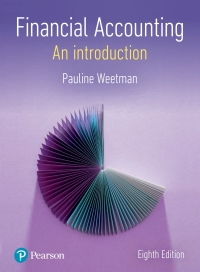Everyone likes a bargain, particularly investors. Hennes & Mauritz, Swedens purveyor of Scandi fashions worldwide, offers value
Question:
Everyone likes a bargain, particularly investors. Hennes & Mauritz, Sweden’s purveyor of Scandi fashions worldwide, offers value on the high street. Unfortunately, fears of “peak Scandi” have damaged the brand. Its shares have lost 40 per cent since their highs in 2015. Like the styles it flogs, H&M shares look cheap relative to many peers. And for good reason.
H&M has found itself in the no woman’s land of fashion retail. Fast fashion outlets struggle to keep footfall and profitability steady while fighting off an online challenge from the likes of Asos. H&M is no exception, as revealed in Thursday’s nine-month results. Its gross profit margin has fallen by one percentage point year on year following summer sales to cut its inventories.
H&M claims it is in transition to a more efficient supply chain. Its supplier orders are falling and should lead to leaner stock levels. So far, though, inventories have risen faster than sales in Krona terms. Shoppers have decided they can wait for autumn discounting. The shares lost 5 per cent on Thursday, despite the valuation wallowing at its cheapest in five years. The dividend is a concern. A 4 per cent yield is attractive, but is it sustainable?
Adjusted for investment and dividends, cash flow looks wanting. Since 2014, the trend is downward, suggesting either capital spending, dividends or both will need alterations. H&M’s refurbishments and store openings are unlikely to come to a halt soon, suggesting dividends are at risk. Unless H&M can squeeze its working capital, thereby lifting operating cash flows, something has to give. The good news is that the company has a strong balance sheet with no debt.
H&M believes that it can borrow from its banks at negative rates. Good thing too. It may need that money. Given H&M’s stubbornly high stock levels relative to sales, expect another quarter of discounting to come. The Scandi retailer will stay on the “reduced” rack for a while longer yet.
Discussion points
1 What does the article say about factors that reduce cash flow?
2 What does the article say about ways of improving cash flow?
Step by Step Answer:






